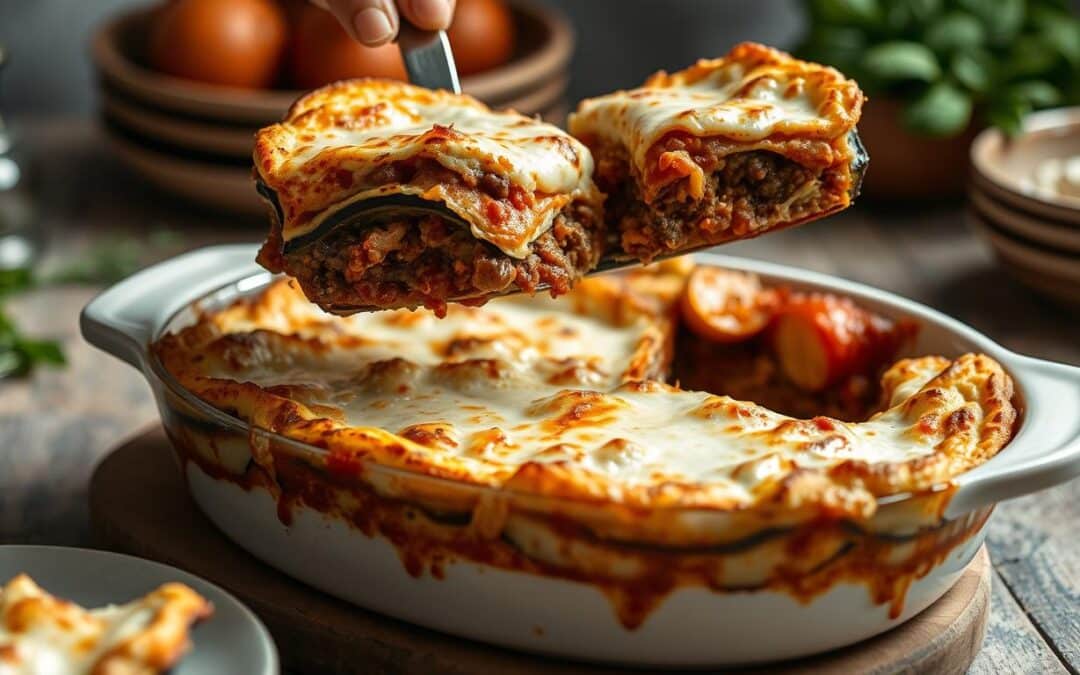Moussaka is to Greeks what lasagna is to Italians – a hearty, layered casserole that brings families together around the dinner table. This iconic dish features tender layers of eggplant, a rich tomato-based meat sauce infused with warming spices, and a creamy béchamel topping that transforms into a golden crust when baked. While it requires some time and effort, the result is a magnificent meal that captures the essence of Mediterranean comfort food.
Traditional Greek Moussaka with its distinctive layers of eggplant, meat sauce, and creamy béchamel
What is Moussaka?
Moussaka is a traditional Greek eggplant casserole that combines layers of sliced eggplant with a flavorful meat sauce and is topped with a thick, creamy béchamel sauce. The dish is baked until the top turns a beautiful golden brown, creating a delicious contrast between the soft eggplant, savory meat, and rich topping.
While most commonly associated with Greece, variations of moussaka can be found throughout the Mediterranean and Middle East. Some versions include potatoes, others use zucchini, and some omit the béchamel topping altogether. Today, we’ll focus on the classic Greek version that has become beloved worldwide.
The Three Key Components of Moussaka
Creating the perfect moussaka involves mastering three distinct elements that come together to form this magnificent dish:
The Eggplant Layer
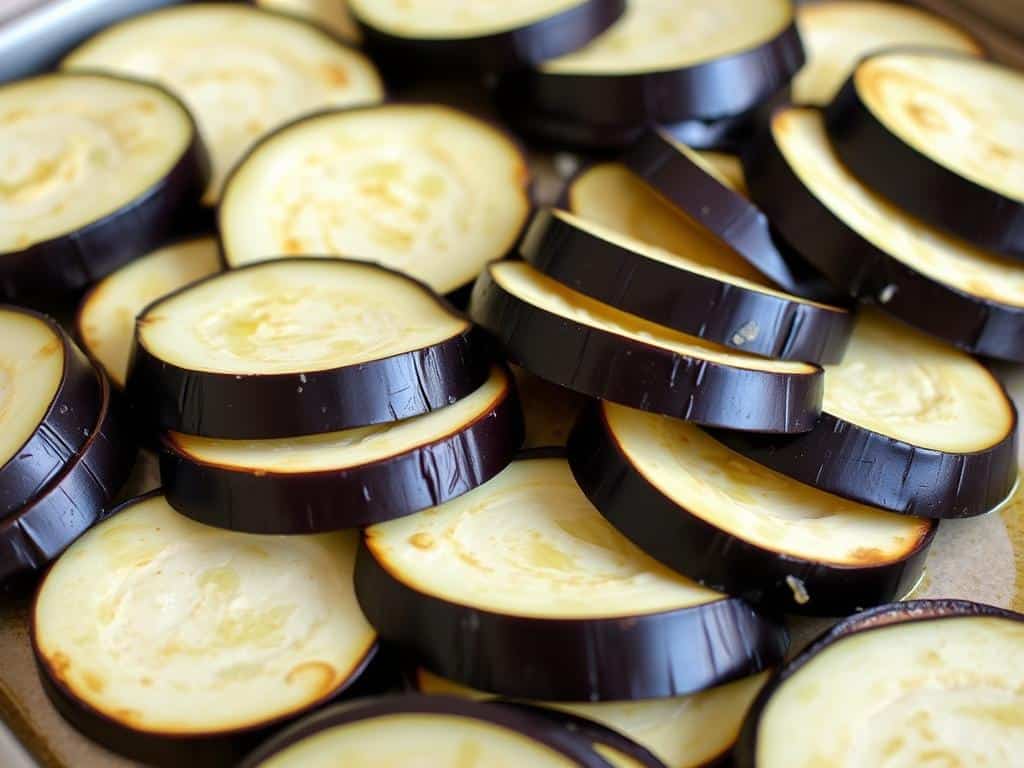
The foundation of moussaka is perfectly prepared eggplant. The slices are typically salted to remove bitterness and excess moisture, then either baked or fried until tender. This creates a flavorful base that absorbs the delicious meat sauce.
The Meat Sauce
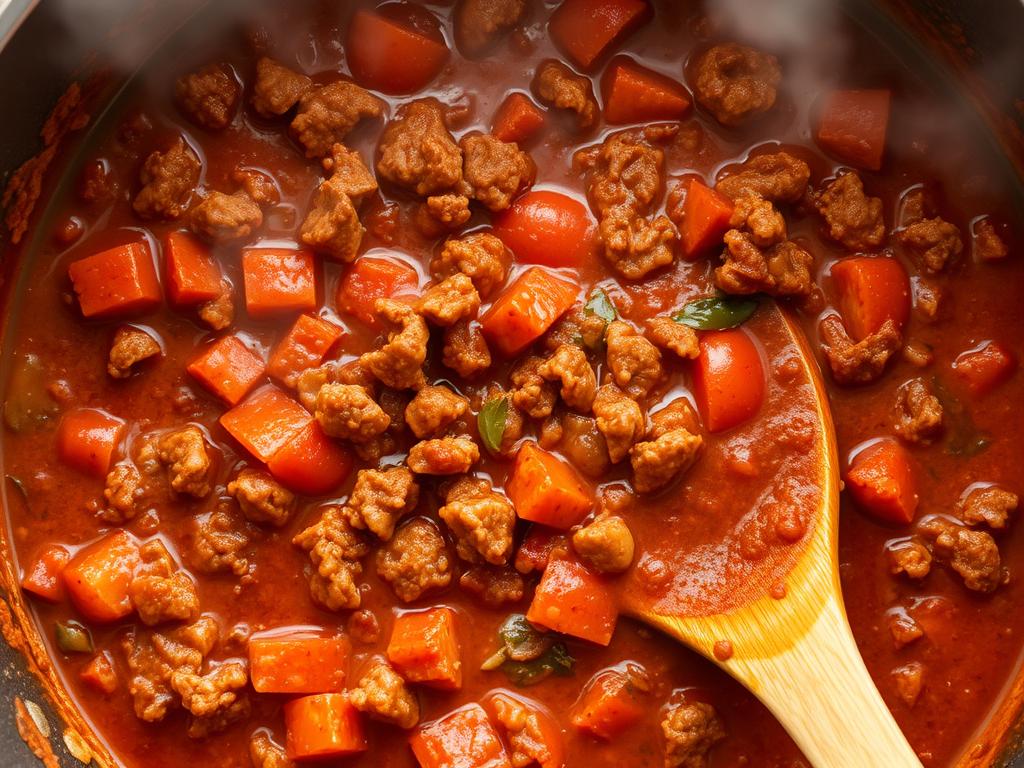
The heart of moussaka is a robust meat sauce made with ground lamb or beef, simmered with onions, garlic, tomatoes, and a distinctive blend of spices including cinnamon, nutmeg, and oregano. This creates a deeply flavorful layer with a hint of sweetness.
The Béchamel Topping
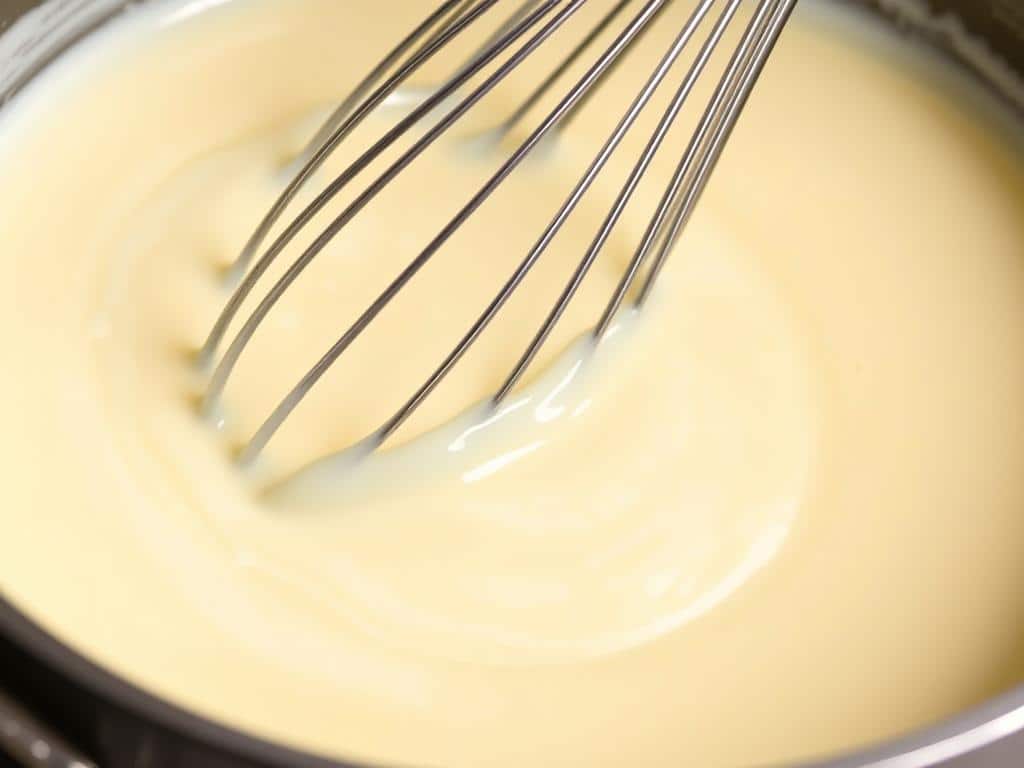
The crowning glory of moussaka is a thick, creamy béchamel sauce enriched with eggs and cheese. Unlike the béchamel used in other dishes, moussaka’s version sets firmly when baked, creating a custard-like topping that holds the dish together.
Ingredients You’ll Need
For the Eggplant Layer:
- 2-3 large eggplants, sliced lengthwise into ¼-inch slices
- Salt for sweating the eggplant
- ¼ cup extra virgin olive oil for brushing
For the Meat Sauce:
- 1 large onion, finely chopped
- 3-4 garlic cloves, minced
- 1½ pounds ground lamb or beef (or a combination)
- ½ cup red wine (optional)
- 1 can (14 oz) diced tomatoes
- 2 tablespoons tomato paste
- ½ cup beef broth
- 2 teaspoons dried oregano
- 1 teaspoon ground cinnamon
- ½ teaspoon ground nutmeg
- 1 bay leaf
- 1 teaspoon sugar
- Salt and pepper to taste
For the Béchamel Sauce:
- 4 tablespoons butter (or olive oil for a Mediterranean twist)
- ½ cup all-purpose flour
- 3 cups warm milk
- ¼ teaspoon ground nutmeg
- ½ cup grated Parmesan or Kefalotyri cheese
- 2 eggs, lightly beaten
- Salt and pepper to taste
Additional:
- ¼ cup breadcrumbs for topping
- 5-6 medium potatoes, sliced (optional)
Preparing the Eggplant for Moussaka
The eggplant is the foundation of a great moussaka, so preparing it properly is crucial. Follow these steps for perfect eggplant layers:
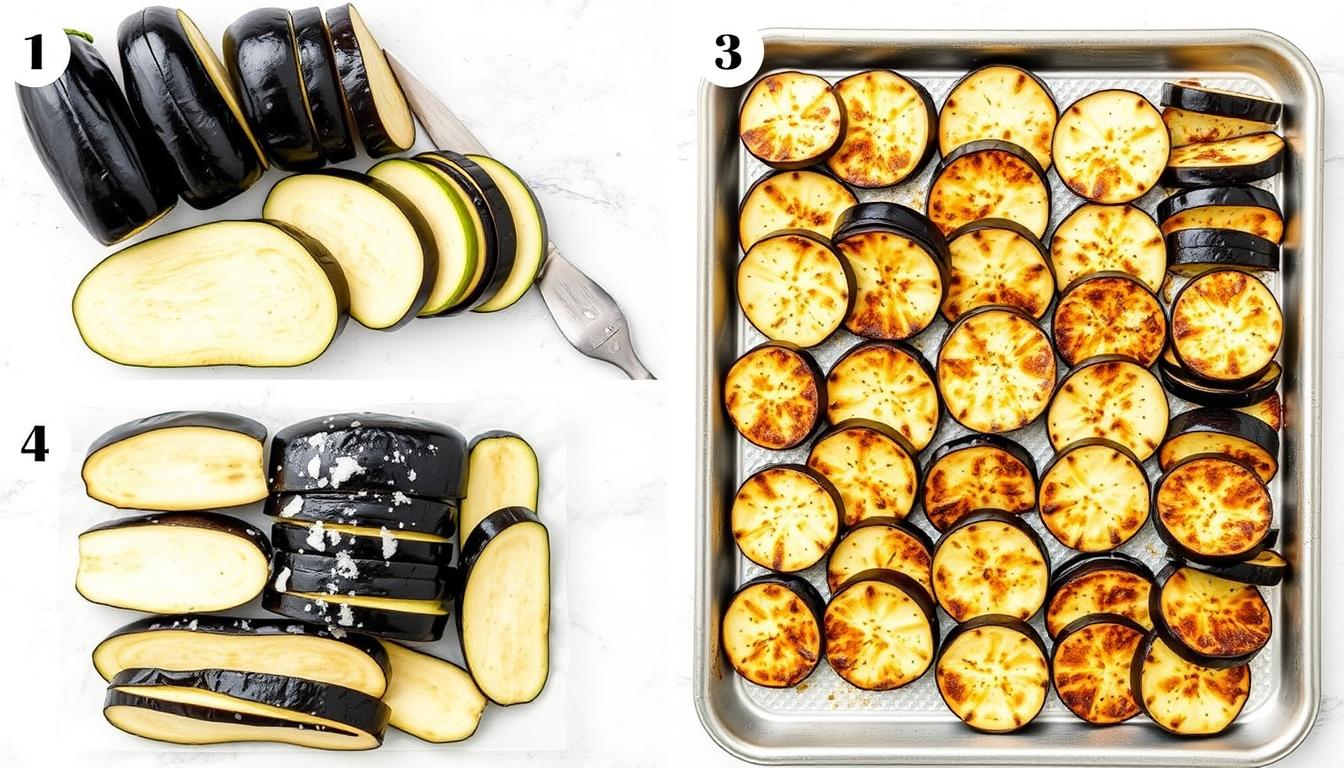
Should You Salt the Eggplant?
Salting eggplant serves two important purposes:
- It draws out excess moisture, preventing a watery moussaka
- It removes any potential bitterness, especially in older eggplants
To salt your eggplant, simply sprinkle the slices with salt and let them sit in a colander for about 30 minutes. Then rinse thoroughly and pat dry with paper towels.
Cooking Methods
There are three main ways to cook eggplant for moussaka:
- Baking: Brush with olive oil and bake at 400°F (200°C) for 20-25 minutes until soft and lightly browned. This is a healthier option that uses less oil.
- Frying: The traditional method – shallow fry in olive oil until golden brown. This gives the richest flavor but uses more oil.
- Broiling: Brush with olive oil and broil for 3-4 minutes per side. A quick method that adds nice charred flavor.
Pro Tip: For the best texture, make sure your eggplant slices are all approximately the same thickness (about ¼ inch). This ensures they’ll cook evenly and create uniform layers in your moussaka.
Potatoes in Moussaka: Yes or No?
The inclusion of potatoes in moussaka is a topic of friendly debate among Greek cooks. While some traditional recipes use only eggplant, many family recipes include a layer of potatoes at the bottom of the dish.
Reasons to Include Potatoes
- They create a sturdy base that makes serving easier
- They add heartiness and make the dish more filling
- Their starchiness balances the richness of the other components
- They provide a nice textural contrast to the softer eggplant
Reasons to Skip Potatoes
- A more traditional, eggplant-focused approach
- Fewer carbohydrates for those watching their intake
- Simpler preparation with one less component
- More pronounced eggplant flavor throughout the dish
If you decide to include potatoes, slice them about ¼-inch thick, brush with olive oil, season with salt, and bake at 400°F (200°C) for about 20 minutes until tender before assembling your moussaka.
Creating the Perfect Moussaka Meat Sauce
The meat sauce is the heart of moussaka, providing rich flavor and aromatic depth. Traditionally made with lamb, it can also be prepared with beef or a combination of both.
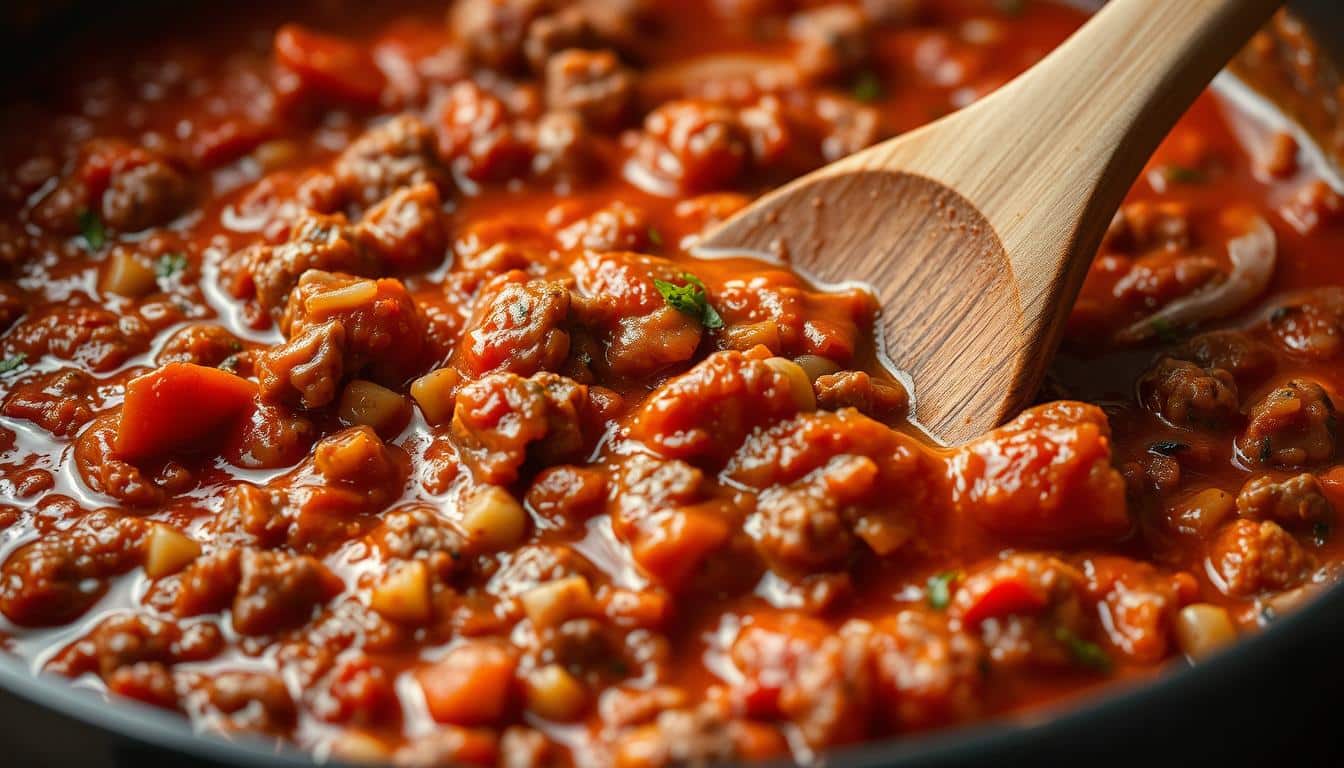
Step-by-Step Meat Sauce Instructions:
- Heat olive oil in a large skillet over medium heat. Add the chopped onions and sauté until soft and translucent, about 5 minutes.
- Add the minced garlic and cook for another minute until fragrant.
- Increase heat to medium-high and add the ground meat. Break it up with a wooden spoon and cook until browned, about 5-7 minutes.
- If using wine, add it now and let it simmer until mostly evaporated, about 2 minutes.
- Stir in the tomato paste and cook for 1 minute to develop the flavor.
- Add the diced tomatoes, beef broth, bay leaf, oregano, cinnamon, nutmeg, sugar, salt, and pepper.
- Reduce heat to low and simmer uncovered for 20-30 minutes, stirring occasionally, until the sauce has thickened considerably. The sauce should be quite thick to prevent a watery moussaka.
- Taste and adjust seasonings as needed. Remove the bay leaf before assembling the moussaka.
“The secret to an exceptional moussaka meat sauce is allowing it to simmer slowly so the spices can fully infuse the meat. The cinnamon and nutmeg might seem unusual in a savory dish, but they create that distinctive, authentic Greek flavor that makes moussaka so special.”
Mastering the Greek Béchamel Sauce
The béchamel sauce used in moussaka is different from the standard French version. Greek béchamel includes eggs and cheese, which help it set firmly when baked, creating a custard-like topping rather than a runny sauce.
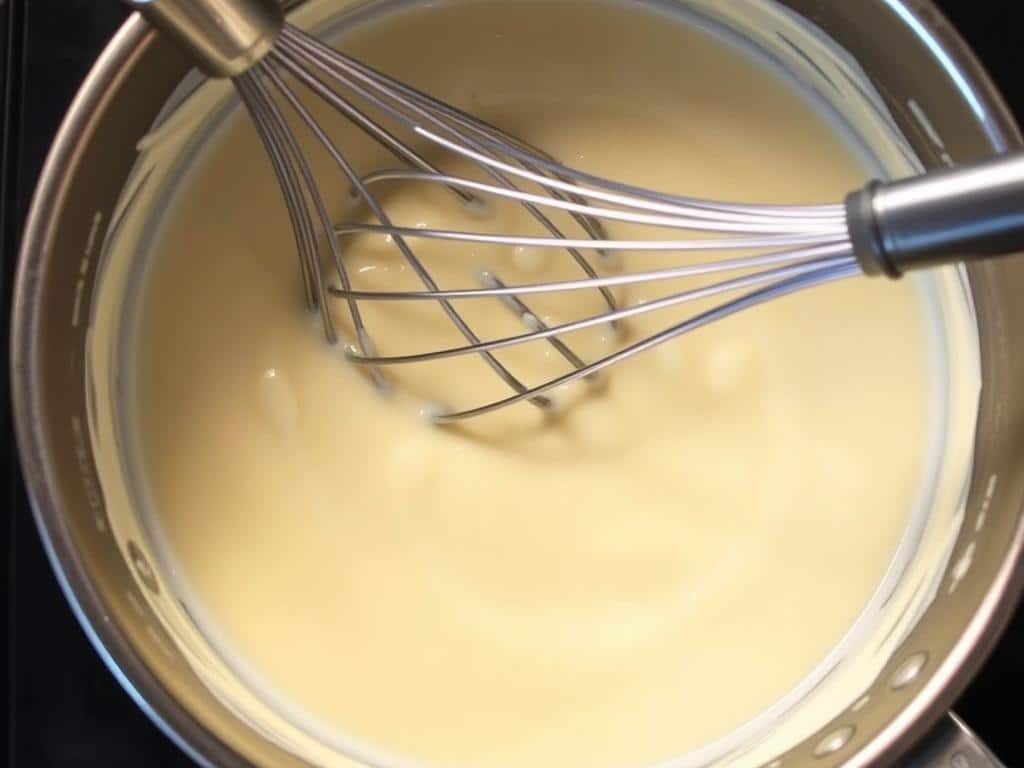
Step-by-Step Béchamel Instructions:
- Melt the butter in a large saucepan over medium heat.
- Add the flour and whisk continuously for 1-2 minutes to cook the flour without browning it.
- Gradually add the warm milk, whisking constantly to prevent lumps from forming.
- Continue cooking and whisking until the sauce thickens enough to coat the back of a spoon, about 5-7 minutes.
- Remove from heat and stir in the nutmeg, salt, and pepper.
- Let the sauce cool slightly for 5 minutes, then whisk in the beaten eggs and grated cheese.
Troubleshooting Tip: If your béchamel has lumps, don’t panic! Remove it from the heat and whisk vigorously until smooth. If that doesn’t work, you can strain it through a fine-mesh sieve or blend it briefly with an immersion blender.
The finished béchamel should be thick but still pourable, similar to the consistency of pancake batter. It will thicken further as it bakes, creating that distinctive creamy layer that makes moussaka so irresistible.
Assembling Your Moussaka
Now comes the fun part – bringing all the components together to create your masterpiece!
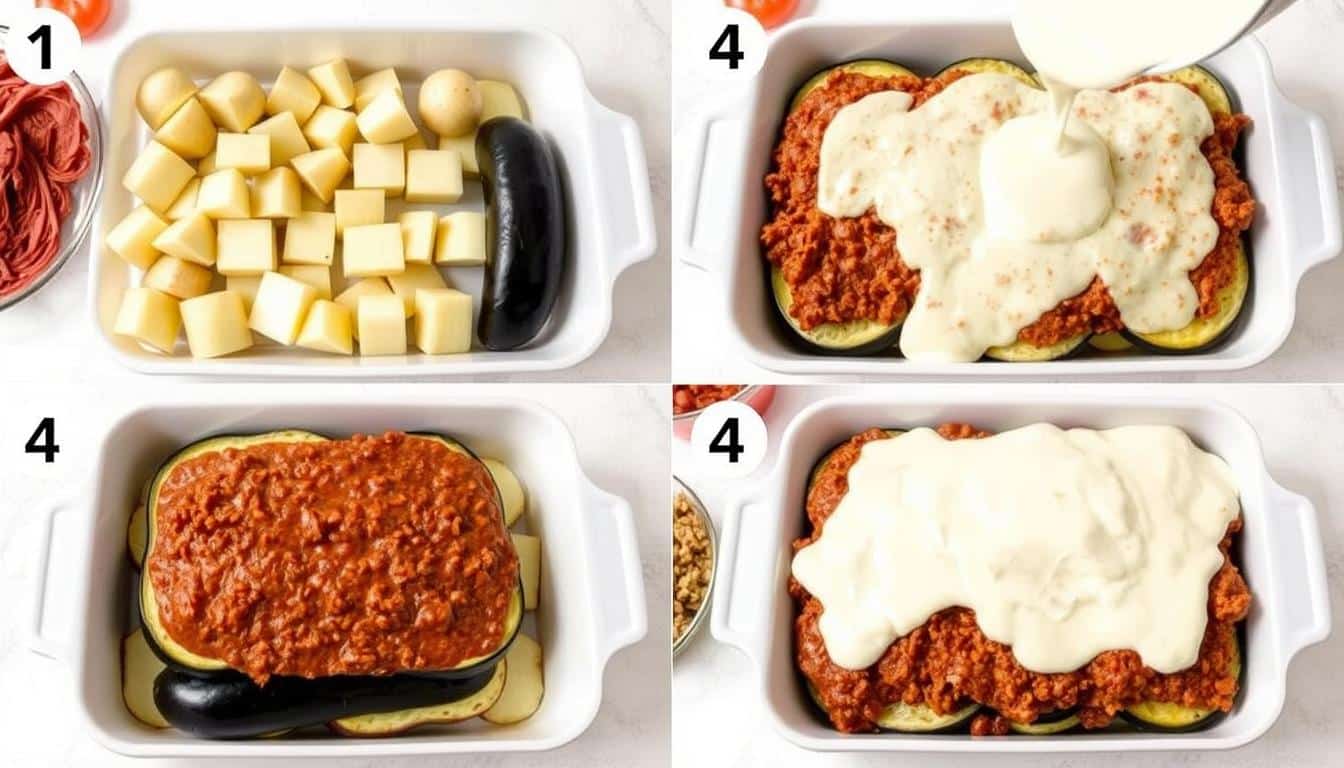
Moussaka assembly: layering potatoes (optional), eggplant, meat sauce, and béchamel
Layer-by-Layer Assembly Instructions:
- Preheat your oven to 350°F (175°C).
- Lightly oil a deep baking dish (approximately 9×13 inches or 23×33 cm).
- If using potatoes, arrange the cooked potato slices in a single layer at the bottom of the dish.
- Arrange half of the eggplant slices over the potatoes (or directly on the bottom if not using potatoes), slightly overlapping them.
- Spread all of the meat sauce evenly over the eggplant layer.
- Arrange the remaining eggplant slices on top of the meat sauce.
- Pour the béchamel sauce over everything, making sure it covers the entire surface.
- Sprinkle the breadcrumbs evenly over the top.
Important: Make sure your meat sauce has cooled slightly before assembling. If it’s too hot, it can start cooking the béchamel prematurely and affect the final texture.
Baking Your Moussaka to Perfection
The final step is baking your assembled moussaka until it’s bubbling with flavor and has a beautiful golden-brown top.
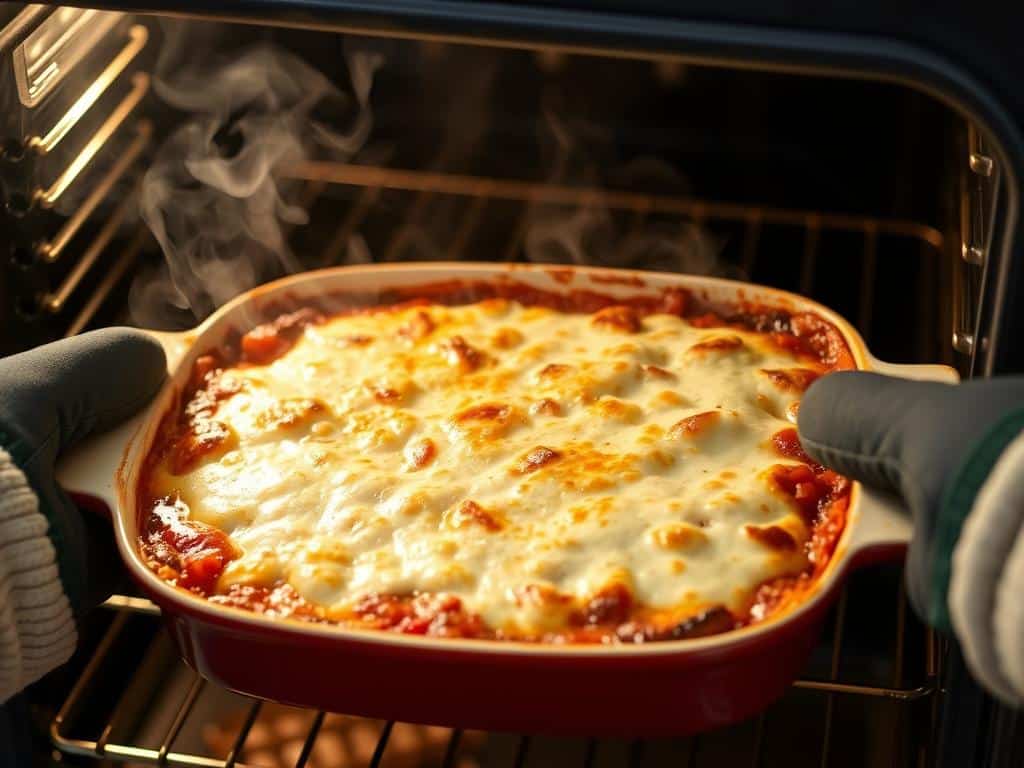
Baking Instructions:
- Place the assembled moussaka in the preheated oven (350°F/175°C).
- Bake uncovered for 45-60 minutes, until the top is golden brown and the moussaka is bubbling around the edges.
- If the top browns too quickly, loosely cover with aluminum foil.
- Remove from the oven and let it rest for at least 15-20 minutes before serving. This resting time is crucial as it allows the layers to set and makes it much easier to cut clean portions.
How to Know When It’s Done: Your moussaka is perfectly baked when the béchamel topping is golden brown, the edges are bubbling, and a knife inserted in the center comes out hot. The resting time is essential – don’t skip it!
Make-Ahead and Storage Tips
Moussaka is actually better the next day when the flavors have had time to meld, making it perfect for entertaining or meal prep.
Make-Ahead Options:
- Prepare components separately: The eggplant, meat sauce, and béchamel can all be prepared 1-2 days ahead and refrigerated separately.
- Assemble but don’t bake: You can assemble the entire moussaka up to 24 hours before baking. Cover and refrigerate, then bring to room temperature before baking.
- Bake in advance: Fully bake the moussaka, cool completely, then refrigerate. Reheat covered at 350°F (175°C) for about 30 minutes.
Storage Guidelines:
- Refrigerator: Baked moussaka will keep in the refrigerator for up to 5 days.
- Freezer: Moussaka freezes beautifully for up to 3 months. You can freeze it either before or after baking.
- Portioning: Consider freezing individual portions for easy weeknight dinners.
- Thawing: Thaw frozen moussaka overnight in the refrigerator before reheating.
Never Miss a Recipe!
Join our Mediterranean cooking community and get more authentic recipes delivered to your inbox.
Serving Suggestions
Moussaka is a complete meal on its own, but it pairs beautifully with a few simple sides to create a memorable Mediterranean feast.

A complete Mediterranean meal: Moussaka served with Greek salad and crusty bread
Perfect Pairings for Moussaka:
Salads
- Traditional Greek salad with tomatoes, cucumbers, feta, and olives
- Simple green salad with lemon vinaigrette
- Marinated vegetable salad
Breads
- Crusty Greek bread for sopping up the sauce
- Warm pita bread
- Garlic bread for a non-traditional but delicious option
Beverages
- Medium-bodied red wine like Agiorgitiko or Xinomavro
- Crisp white wine like Assyrtiko
- Greek beer
Vegetarian Moussaka Variation
If you don’t eat meat or are cooking for vegetarians, you can still enjoy this classic dish with a few simple substitutions.
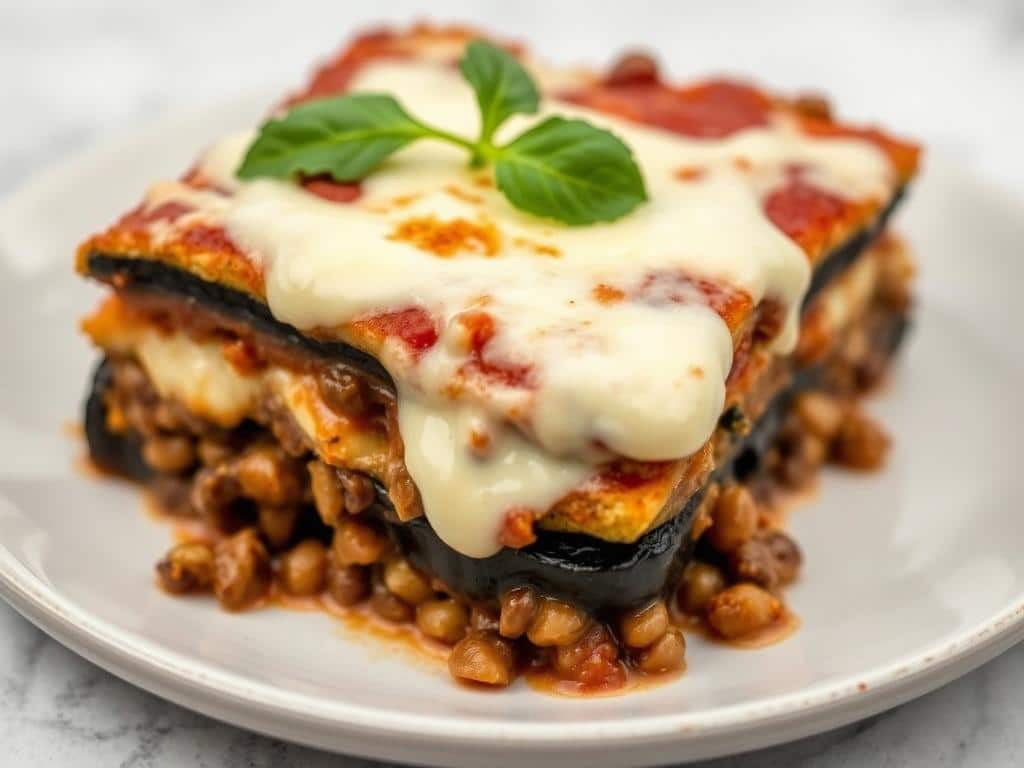
Vegetarian Moussaka with lentil filling instead of traditional meat sauce
Vegetarian Filling Options:
- Lentil filling: Cook 2 cups of green or brown lentils with the same aromatics and spices used in the meat sauce.
- Mushroom filling: Sauté 1.5 pounds of finely chopped mushrooms (portobello, cremini, or button) until they release their moisture and become browned.
- Plant-based meat substitute: Use your favorite plant-based ground meat alternative, prepared with the same seasonings as the traditional recipe.
The rest of the recipe remains the same, with layers of eggplant, your vegetarian filling of choice, and the creamy béchamel topping.
Troubleshooting Common Moussaka Issues
Why is my moussaka watery?
This is usually caused by not properly salting and drying the eggplant, or not cooking the meat sauce long enough to reduce excess moisture. Make sure to salt the eggplant and let it sit for at least 30 minutes, then pat it dry thoroughly. Also, simmer the meat sauce until it’s quite thick.
My béchamel sauce has lumps. How can I fix it?
Remove the sauce from heat and whisk vigorously until smooth. If that doesn’t work, strain it through a fine-mesh sieve or blend it briefly with an immersion blender. To prevent lumps in the future, add the milk gradually while whisking constantly.
The top of my moussaka is browning too quickly but it’s not cooked through.
Cover the moussaka loosely with aluminum foil to prevent further browning while allowing it to continue cooking. You might also want to check your oven temperature with an oven thermometer, as ovens can sometimes run hotter than their setting indicates.
My moussaka falls apart when I try to serve it. What went wrong?
The most common reason is not letting it rest long enough after baking. Allow your moussaka to rest for at least 15-20 minutes before cutting into it. This gives the layers time to set and makes it much easier to serve neat portions.
The Cultural Significance of Moussaka
Moussaka is more than just a delicious dish; it’s a symbol of Greek culinary heritage and family tradition. In Greek culture, food is a central part of social life, and dishes like moussaka are often prepared for special gatherings and celebrations.

In Greek culture, moussaka often takes center stage at family gatherings and celebrations
The dish represents the Greek approach to cooking: using simple, fresh ingredients and transforming them through time and technique into something extraordinary. The layering of ingredients in moussaka also reflects the layered history of Greek cuisine, which has been influenced by various cultures throughout the Mediterranean region.
When you prepare moussaka, you’re not just cooking a meal; you’re participating in a culinary tradition that has been passed down through generations of Greek families, each adding their own special touch to this beloved classic.
Conclusion: Your Moussaka Journey
Creating an authentic Greek moussaka is indeed a labor of love, but the results are well worth the effort. This magnificent dish combines the humble eggplant with aromatic meat sauce and creamy béchamel to create something truly greater than the sum of its parts.
Whether you’re cooking for a special occasion, preparing a meal to impress guests, or simply wanting to explore the rich traditions of Mediterranean cuisine, moussaka offers a rewarding culinary experience. The techniques you’ll master – from properly preparing eggplant to creating the perfect béchamel – will serve you well in many other dishes.
So roll up your sleeves, gather your ingredients, and embark on this delicious journey through one of Greece’s most iconic contributions to world cuisine. Your taste buds will thank you!
Ready to Explore More Mediterranean Flavors?
Join thousands of food lovers who receive our best recipes and cooking tips every week.

